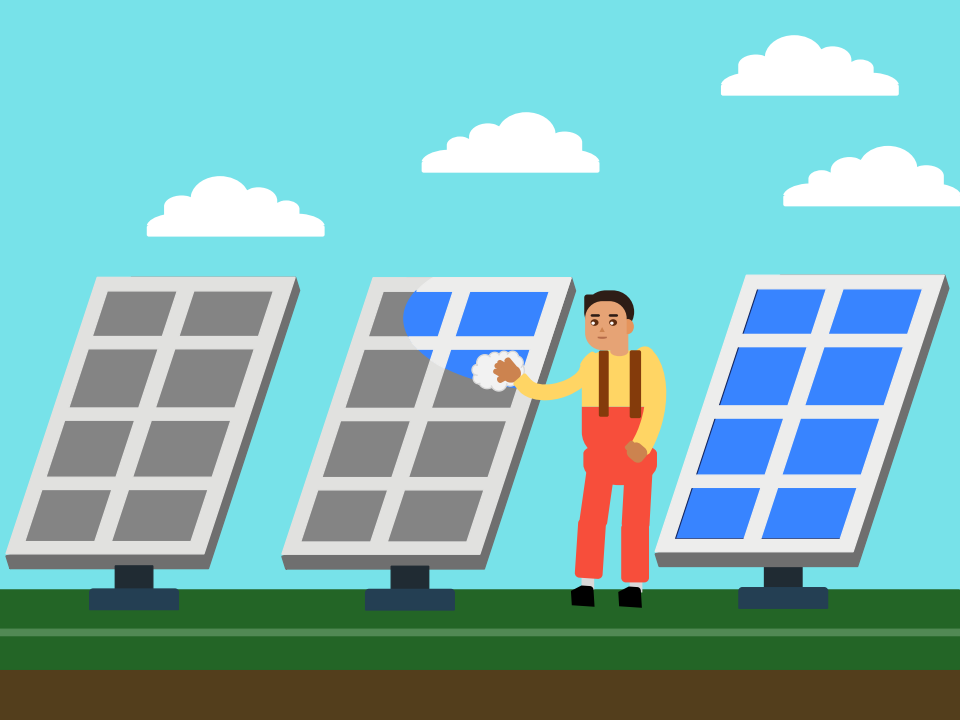The proposed design has an increased efficiency under partial shading of PV modules, this is a benefit of the DPP architecture with an MPPT that has multiple inputs, one for each panel in the string (array of PVs connected in series).
The power output of the solar panels depends on the irradiance that reaches them therefore any obstruction that creates shading over the PV will decrease its efficiency. Maghami (2016) discussed how the electrical characteristics are affected by the shading produced by soiling. Divided the shading in two categories: soft shading such as air pollution and hard shading which occurs when a solid such as accumulated dust blocks the sunlight.
The following images present different common cases of shading that affect the solar panel setups.

Shading caused by the dust accumulated on top of the solar panels.

Shading caused by other buildings.

Shading caused by a tree.
According to Maghami (2016), "The result shows that soft shading affects the current provided by the PV module, but the voltage remains the same. In hard shading, the performance of the PV module depends on whether some cells are shaded or all cells of the PV module are shaded. If some cells are shaded, then as long as the unshaded cells receive solar irradiance, there will be some output although there will be a decrease in the voltage output of the PV module." (p. 1307).
When considering a string of PV modules Maghami (2016) found that “the effect of soft shading of soil on a single string array is the same as the PV module discussed earlier.” (p. 1314), “when there is uneven hard dust on different strings in parallel, a voltage mismatch occurs. In this condition, which is called partial shading, different parallel strings, which are connected to a common inverter, deliver different voltages to the inverter. This makes it difficult for the inverter to seek the optimum point of voltage at which the maximum power is delivered.” (p. 1314).
Since it is harder for the MPPT to find the optimum point of voltage under partial shading conditions, their efficiency decreases. As a solution to that problem, MPPTs with multiple inputs for the different PV modules in the string are recommended. They can achieve a higher efficiency under any scenario including sub-optimal conditions (soft and hard shading).
References:
Maghami, Mohammad Reza & Hizam, Hashim & Gomes, Chandima & Mohd Radzi, Mohd Amran & Rezadad, Sina & Hajighorbani, Shahrooz. (2016). Power Loss Due to Soiling on Solar Panel: A review. Renewable & Sustainable Energy Reviews. 59. 1307-1316. 10.1016/j.rser.2016.01.044.
 Leonardo Ward
Leonardo Ward
Discussions
Become a Hackaday.io Member
Create an account to leave a comment. Already have an account? Log In.